Algae is the hobbyist’s sworn enemy, spreading in a slimy carpet over your tank and coating your decorations, plants, and viewing panes in green, red, or brown gunk.
You can use an algae magnet to remove the eyesore from your tank glass, but you’ll need some help to get rid of algae growing in hard-to-reach spots. That’s where a cleanup crew comes in!
Keep reading to learn about the critters that love to chow down on algae growing in coldwater setups!
Why Do Algae Grow in Cold Water Fish Tanks?
A few causes of algae growing in cold water fish tanks include too much light, high levels of nitrates in the water, lots of floating detritus in the water column, and low CO2 levels.
Excessive Light
In essence, algae are tiny plants that need light to thrive and grow. If your tank is placed in direct sunlight or your aquarium lights are on for too long each day, you’ll encourage algae of all species to grow.
To fix the problem, try relocating your tank if possible so that it’s out of direct sunlight. If you have live plants growing in your tank, you’ll need to keep the tank lights on for eight to ten hours daily to allow the plants to photosynthesize.
If you’re not around to turn the lights off and on manually, we recommend that you invest in an automatic timer that you’ll get from good DIY stores.
Nitrates
Like all plants, algae utilize nitrates in the water as a kind of fertilizer.
So, if you don’t keep up with regular water changes and allow the levels of nitrates to build up in your aquarium, algae will love that!
Similarly, if you don’t maintain your filtration system, the mechanical element won’t remove floating detritus and particles of fish waste from the water. Organic waste gradually decomposes, releasing ammonia into the water, ultimately turning to nitrates.
CO2
If CO2 levels in your tank are low or unstable, living plants can’t utilize the available nitrate and light for photosynthesis.
That might be bad news for your plants, but certain species of algae do best when CO2 levels are low.
How Did Algae Get Into My Fish Tank?
Algae typically finds its way into your fish tank in three ways.
New Plants
New aquatic plants you buy for your cold water tank can sometimes carry algae spores you can’t see with the naked eye.
The spores rapidly grow into algae, spreading through your tank and taking over in a matter of just a few days.
New Fish
Algae can also enter your tank as tiny free-floating spores or strands in a bag with new fish.
As soon as you empty the algae-bearing water into your tank, the tiny plants attach themselves to a solid surface or plant leaf and begin growing.
Old Substrate
If you have an existing tank, it can be tempting to use some of the substrate that’s in there, especially if you’re setting up a new aquarium.
In theory, that’s a great idea since the substrate will already contain the beneficial bacteria you need to kickstart your new filtration system. However, that substrate might also carry tiny algae colonies that you can’t see until it’s too late and they’re in your new tank.
Best Cold Water Algae Eaters
Algae grow quickly in the right conditions, so there’s no time to lose!
Here’s a list of cold water algae eaters you might want to add to your setup.
Reticulated Hillstream Loach (Sewellia lineolata)
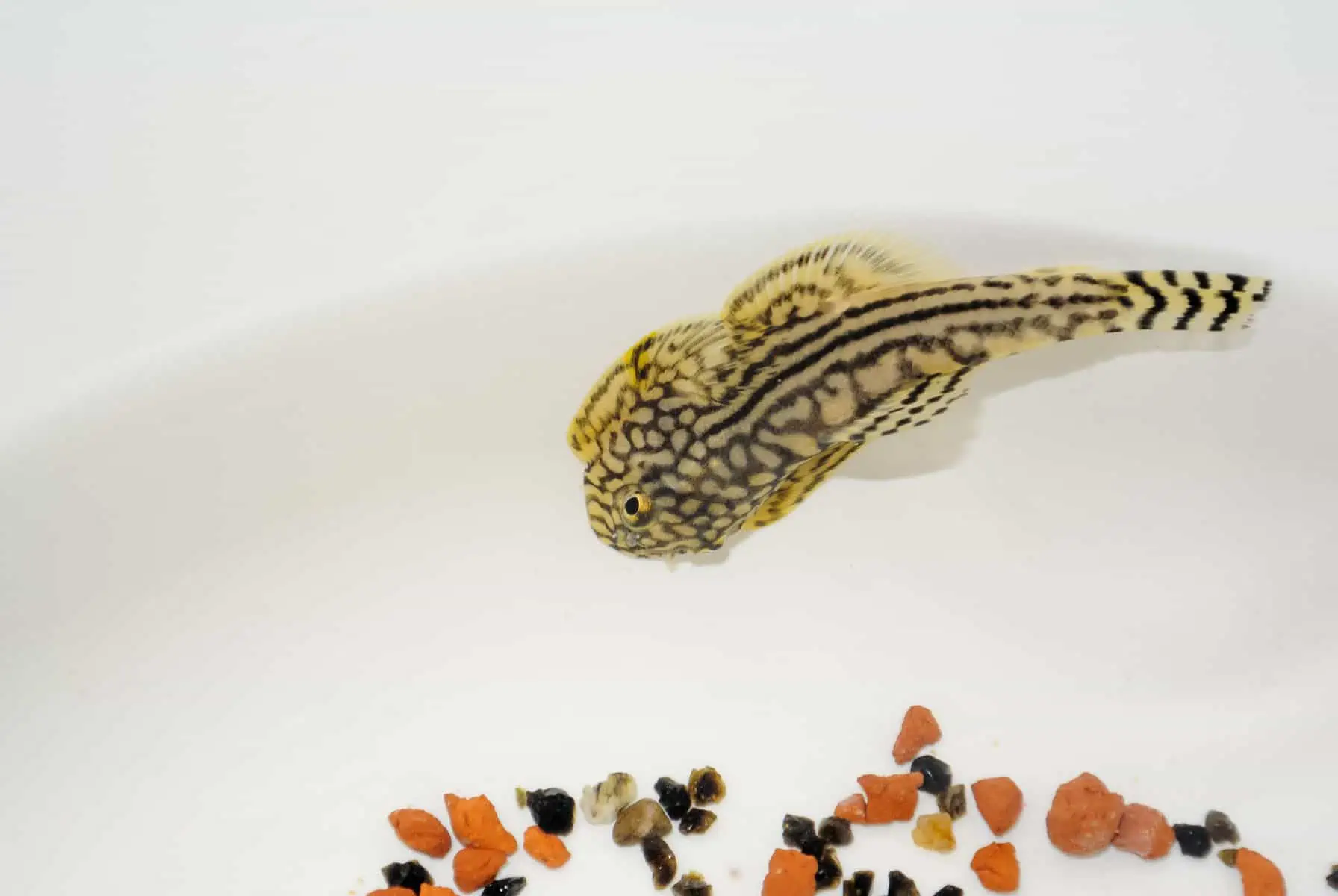
- Temperature: 68 and 75°F
- Minimum tank size: 50 gallons
- Size: 2.2 inches
- Ease of care: Beginner-friendly
The Reticulated Hillstream loach is a beautiful creature that’s also sometimes called the Gold Ring Hillstream loach or Tiger Hillstream loach.
In their natural habitat, these fish inhabit shallow, fast-flowing, highly-oxygenated streams and rivers in Vietnam. The loaches spend much of their day foraging along the substrate for algae, detritus, and insect larvae.
To thrive, these fish need a strong flow within their tank, lots of dissolved oxygen, and cooler water temperatures. They are relatively easy to care for, provided water parameters in their environment remain stable.
Corydoras Catfish (Corydoras paleatus)
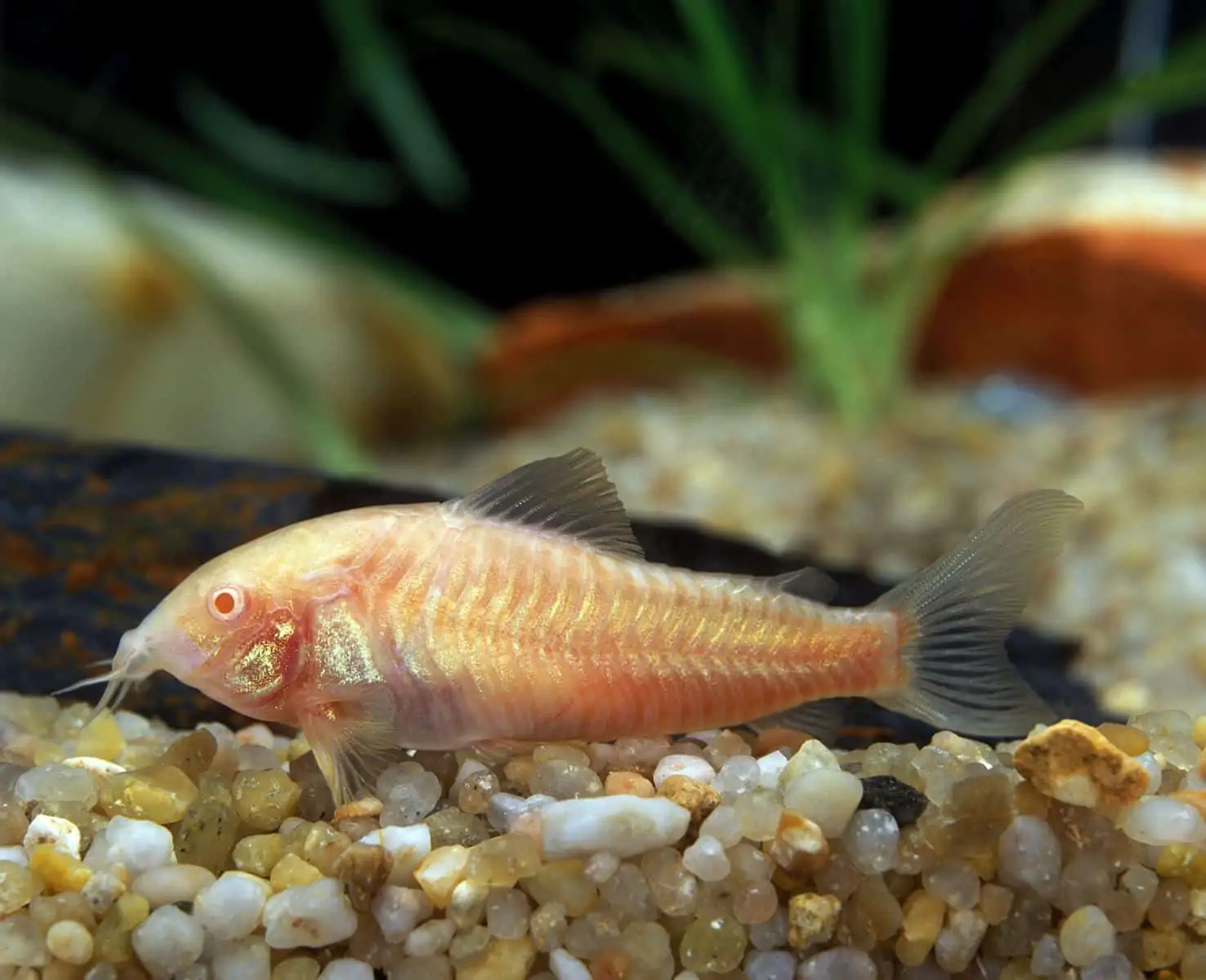
- Temperature: 70 and 80°F
- Minimum tank size: 10 gallons
- Size: 1 to 4 inches
- Ease of care: Beginner-friendly
Corydoras catfish come in over 100 different varieties, so you’ll surely find one that appeals to you!
These active fish are peaceful bottom-dwellers that will keep busy throughout the day, scavenging around the substrate for leftover food and tidbits. Corys also eat algae, making them a helpful addition to a cleanup crew.
Corydoras are shoaling fish that must be kept in groups of at least five of the same species. If you listen carefully, you might hear your corys “talking” to each other by grunting and squeaking, especially during courtship or when alarmed.
Amano Shrimp (Caridina multidentata)
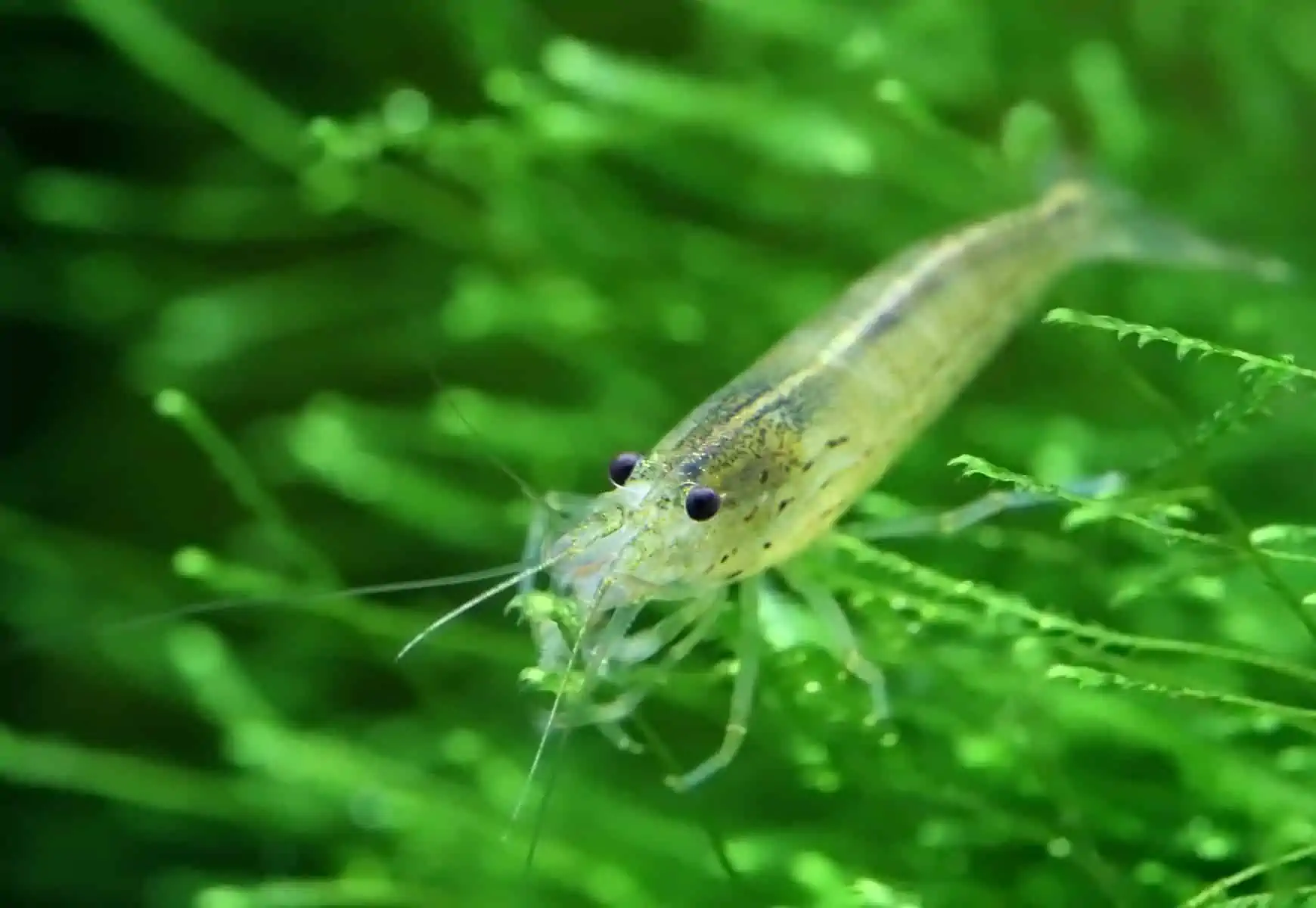
- Temperature: 64 to 80°F
- Minimum tank size: 5 gallons
- Size: 2 inches
- Ease of care: Beginner-friendly
I love to keep a few Amano shrimp in my cold water tank! These busy little inverts graze on algae, organic matter, general detritus, and even dead fish if I don’t get there quickly enough!
Amanos are extremely hardy, easy to care for, and will happily chow down on beard and black hair algae, which other critters won’t touch.
Ramshorn Snail (Planorbidae sp.)
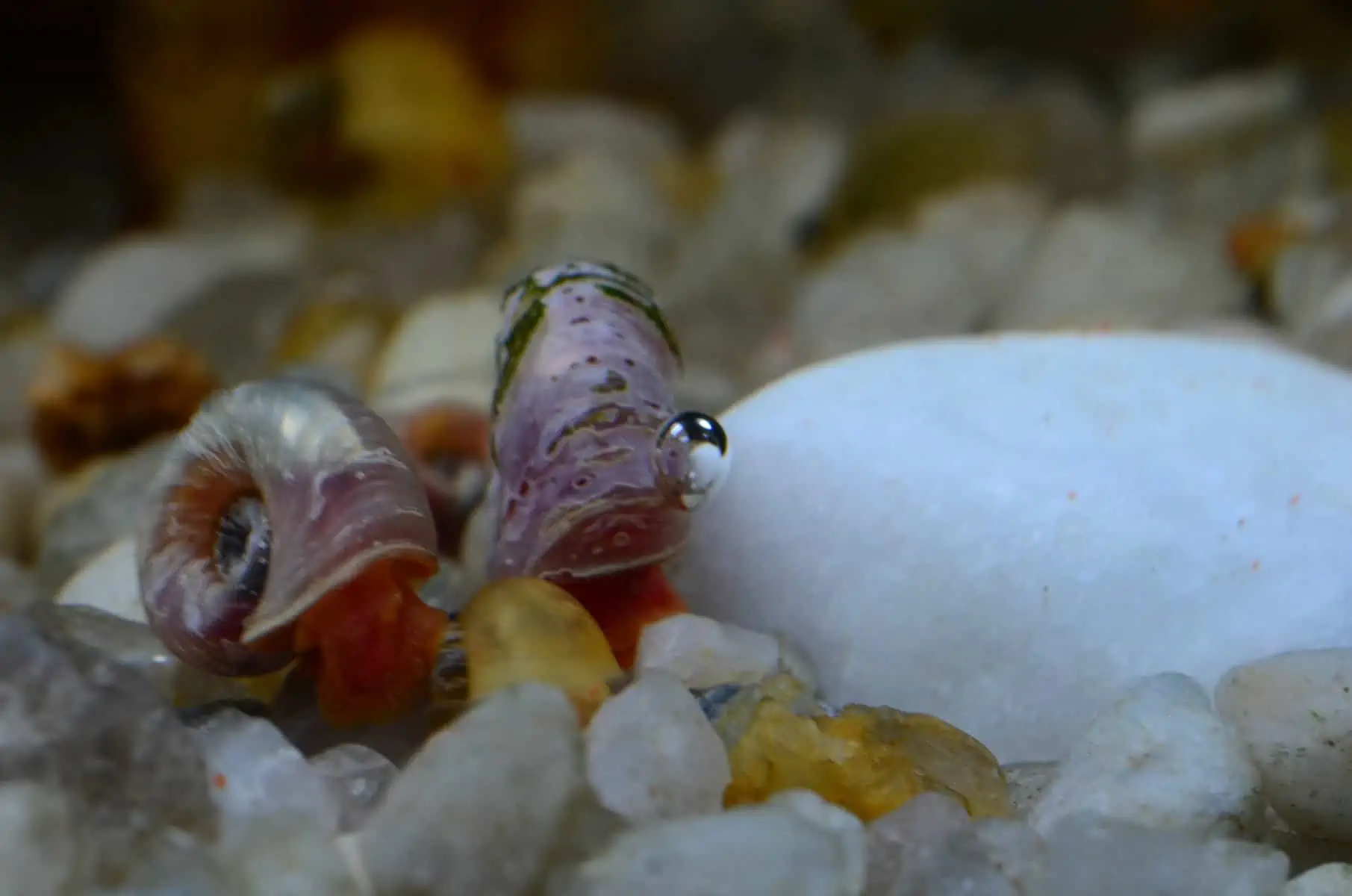
- Temperature: 64 to 80°F
- Minimum tank size: 5 gallons
- Size: 1 inch
- Ease of care: Beginner-friendly
Ramshorn snails are not the most attractive of creatures, although you can find color morphs of blue and albino, as well as brown, and they do have a taste for algae.
These snails belong to the Planorbidae family, many of which are viewed as pest snails rather than pets, largely because they reproduce quickly and can be a nuisance in your tank.
That said, the Ramshorn snails for sale in pet shops are excellent scavengers, happily eating algae, dead fish, leftover fish food, and other waste matter.
Rubber Lip Pleco (Chaetostomus sp.)
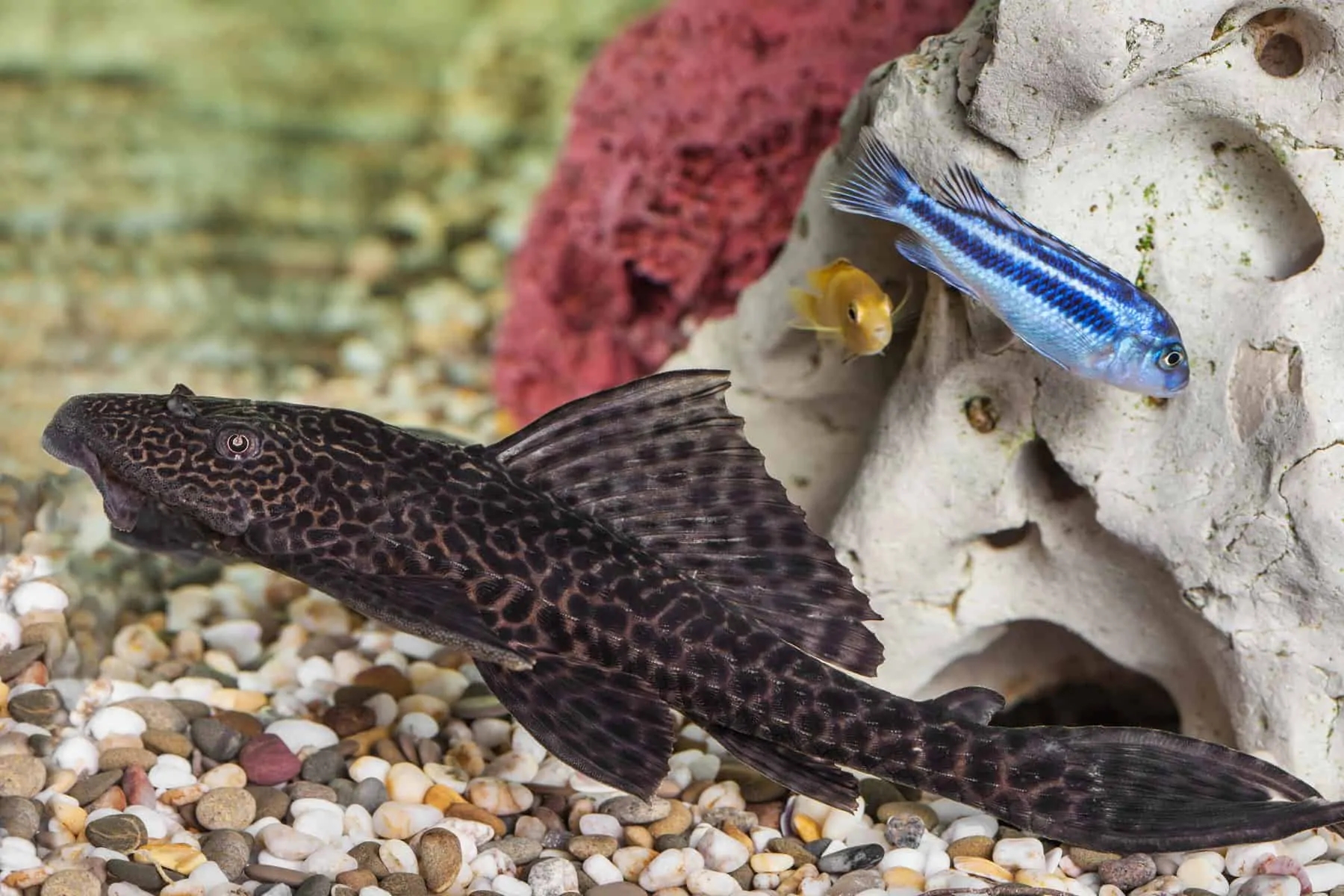
- Temperature: 70 to 78°F
- Minimum tank size: 25 to 30 gallons
- Size: 5 inches
- Ease of care: Beginner-friendly
The Rubber Lip pleco is a fantastic algae eater that will make serious inroads into any algae growing on the surfaces in your aquarium.
Rubber Lip plecos are not commonly seen in fish stores, which is a shame, as these fish make excellent cold-water algae eaters. These hardy fish can grow to around 5 inches long, so you need a large tank to accommodate one.
Nerite Snail (Neritina natalensis)
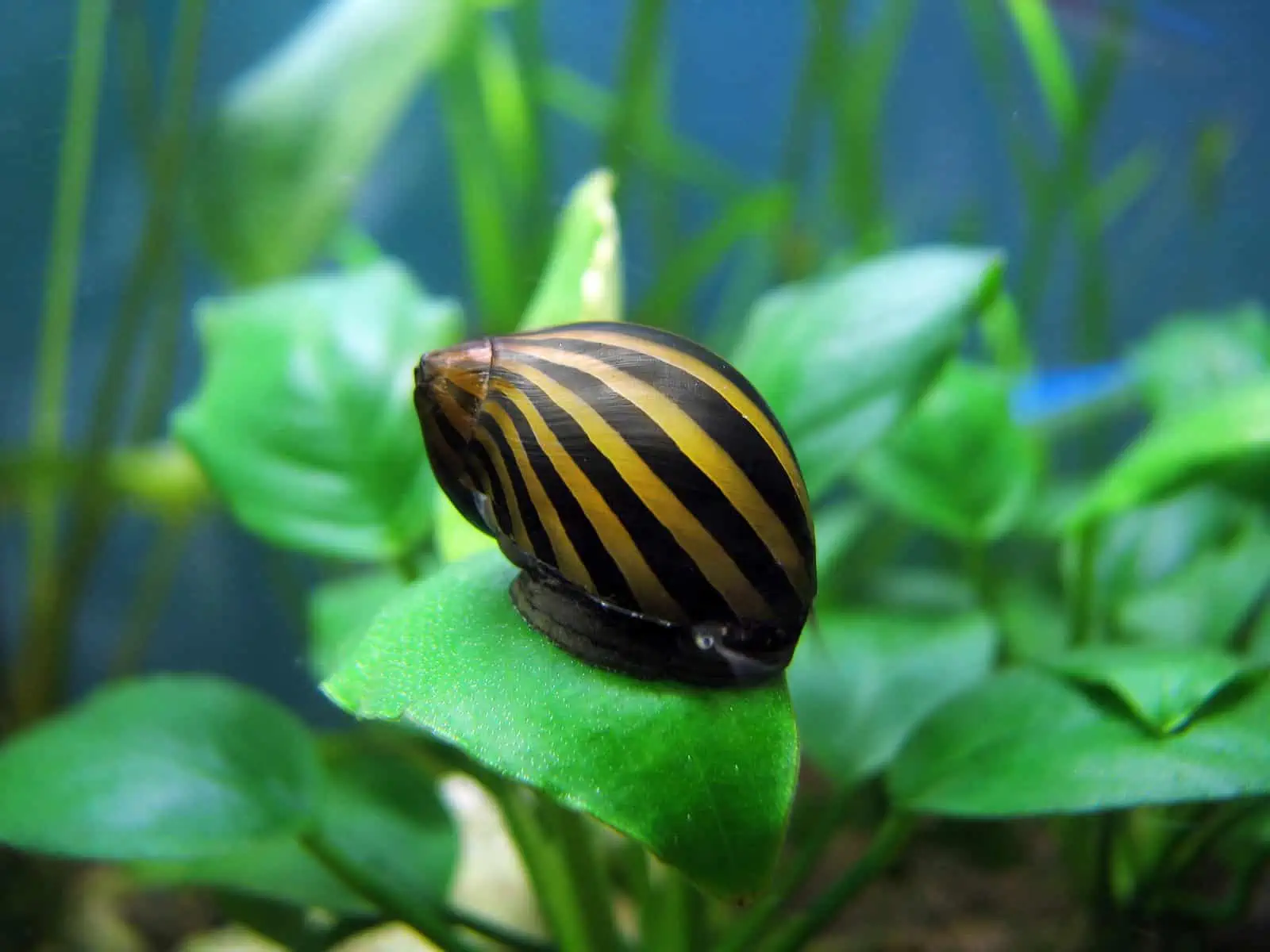
- Temperature: 72 to 78°F
- Minimum tank size: 10 gallons
- Size: 1 inch
- Ease of care: Beginner-friendly
Nerite Snails are a personal favorite of mine, largely because they work hard to clean your tank of algae and general detritus. These diligent workers will also eat dead fish if you happen to miss a casualty in your tank.
These little mollusks are quite attractive, too, coming in various colors, including brown, yellow, and black, and many have striped patterns.
Many hobbyists avoid keeping freshwater snails since some species are prolific breeders and can quickly overrun a tank. However, Nerite snails don’t breed in freshwater, needing brackish conditions to spawn. So, you don’t need to worry about snail population explosions!
Nerites need lots of calcium in their diet and a water pH of over 7.0 to keep their shells in good condition.
Siamese Algae Eater (Crossocheilus oblongus)
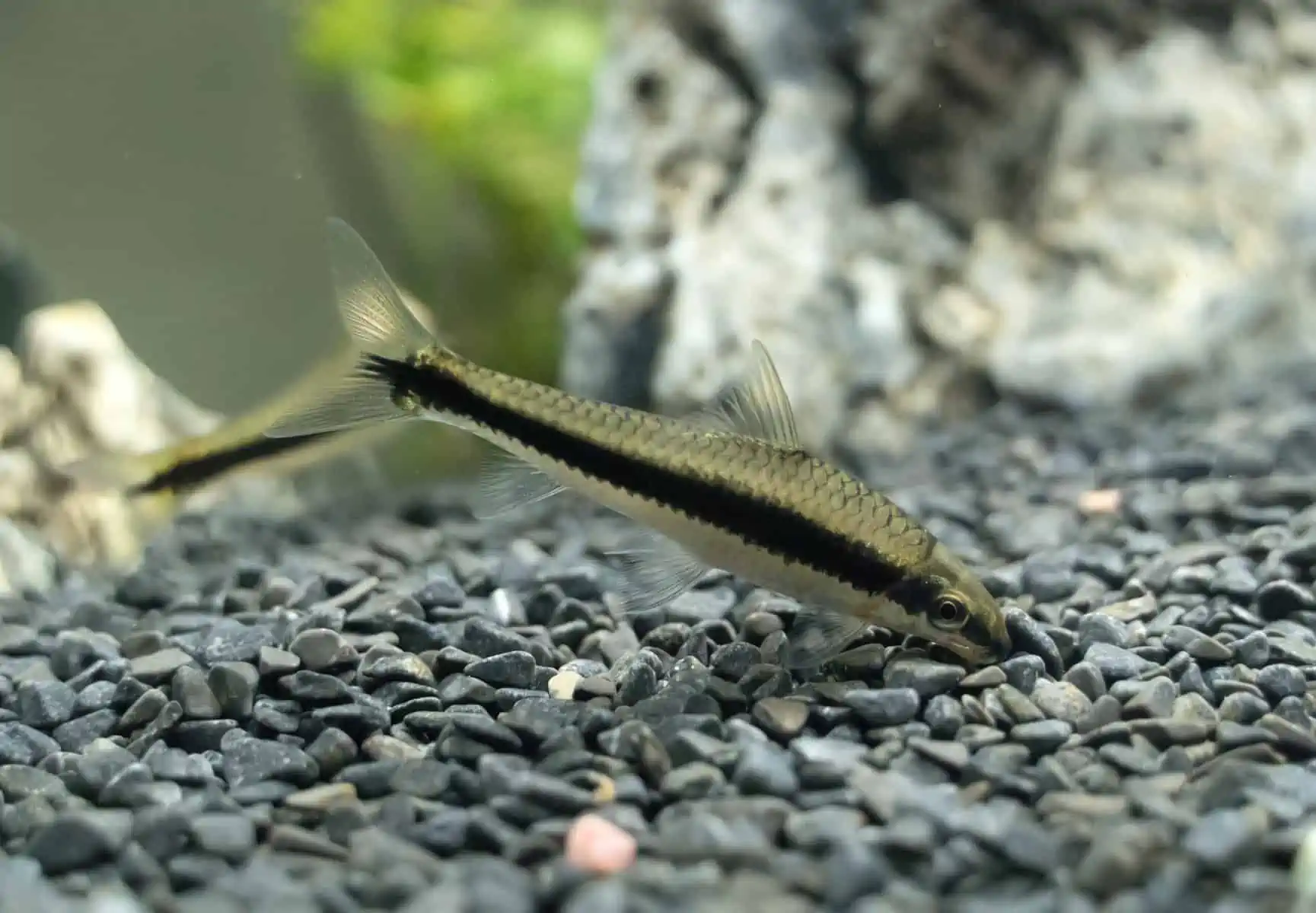
- Temperature: 75 to 79°F
- Minimum tank size: 25 to 30 gallons
- Size: Up to 6 inches
- Ease of care: Beginner-friendly
The Siamese Algae Eater is an extremely popular choice when it comes to selecting cleanup crew members for a cold water tank.
These attractive fish are peaceful and relatively easy to look after, making them ideal community fish for a beginner’s tank. But the main reason these fish are so popular is their habit of eating algae.
In fact, Siamese Algae Eaters will happily eat most types of algae rather than specialize in one or two species.
Whiptail Catfish (Rineloricaria lanceolata)

- Temperature: 75 to 79°F
- Minimum tank size: 30 gallons
- Size: 4.4 inches
- Ease of care: Beginner-friendly
Whiptail catfish are one of my favorite fish. These peaceful creatures graze on algae growing in your tank. That said, you’ll need to supplement the fish’s diet with algae wafers and omnivore flakes.
These delicate-looking fish need a heavily-planted set up with plenty of hiding places and shady spots. The water flow should be pretty slow, and you’ll need to choose small, quiet tank mates of a similar temperament and size to the Whiptails, such as tetras, Corydoras catfish, and Pencilfish.
Chinese Algae Eater (Gyrinocheilus aymonieri)
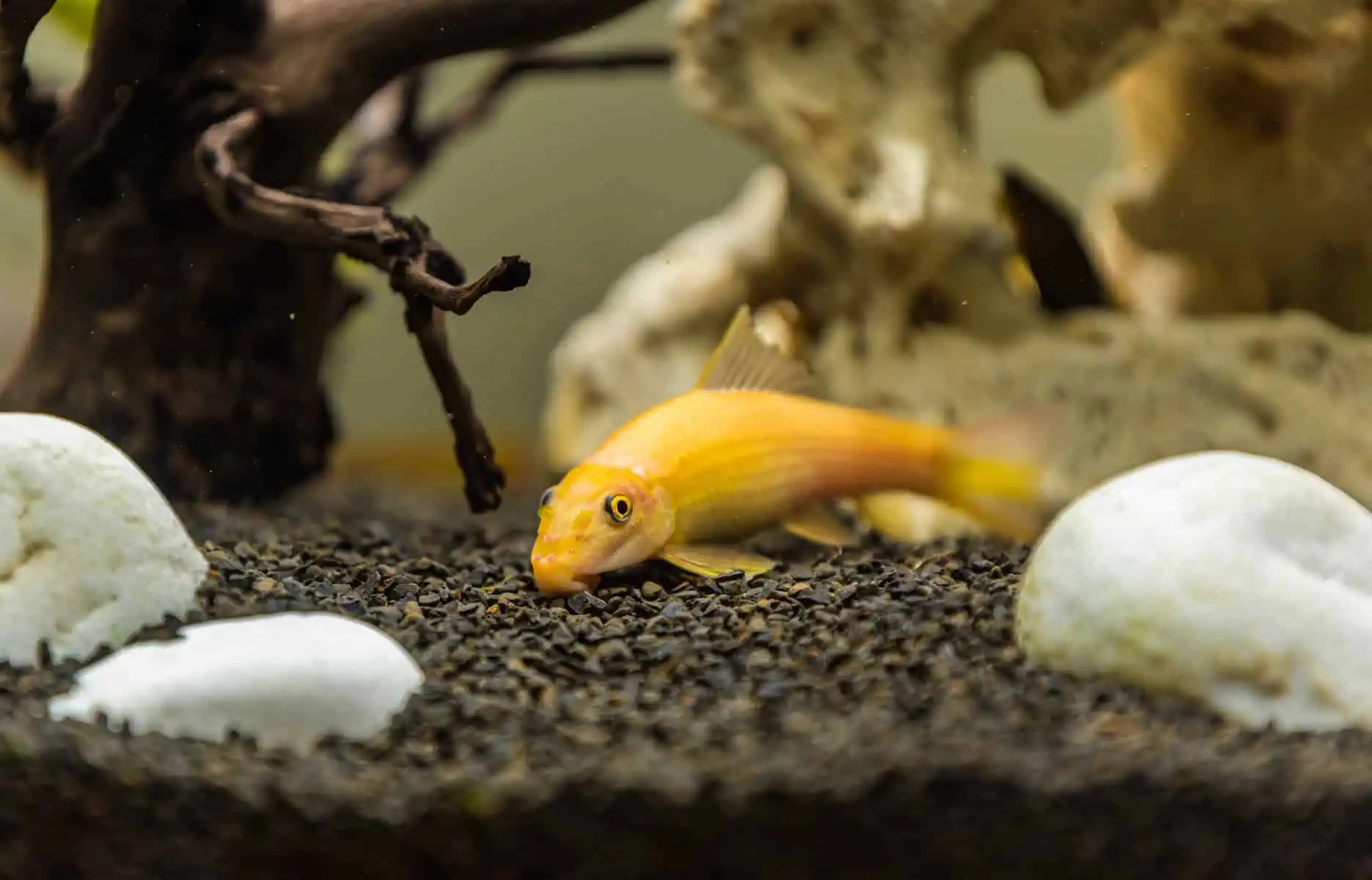
- Temperature: 74 to 80°F
- Minimum tank size: 50 gallons
- Size: up to 10 inches
- Ease of care: Intermediate
In the wild environment, the Chinese Algae Eater’s primary diet is algae. So, if you have a tank with a serious algae problem, these guys are definitely well worth considering as cleaning crew members.
These hungry algae eaters attach themselves to rocks, the tank glass, and even plants so that they can scrape off the algae and feed on it.
Juveniles can live on algae alone, but adults will need to be offered meaty proteins once a week or so, such as frozen bloodworms, daphnia, and the like.
Be careful when choosing tank mates for Chinese Algae Eaters, as these fish tend to become aggressive as they mature. Ideally, you should have a community of semi-aggressive, larger fish species to get along with these guys.
Fancy Goldfish (Carassius auratus)
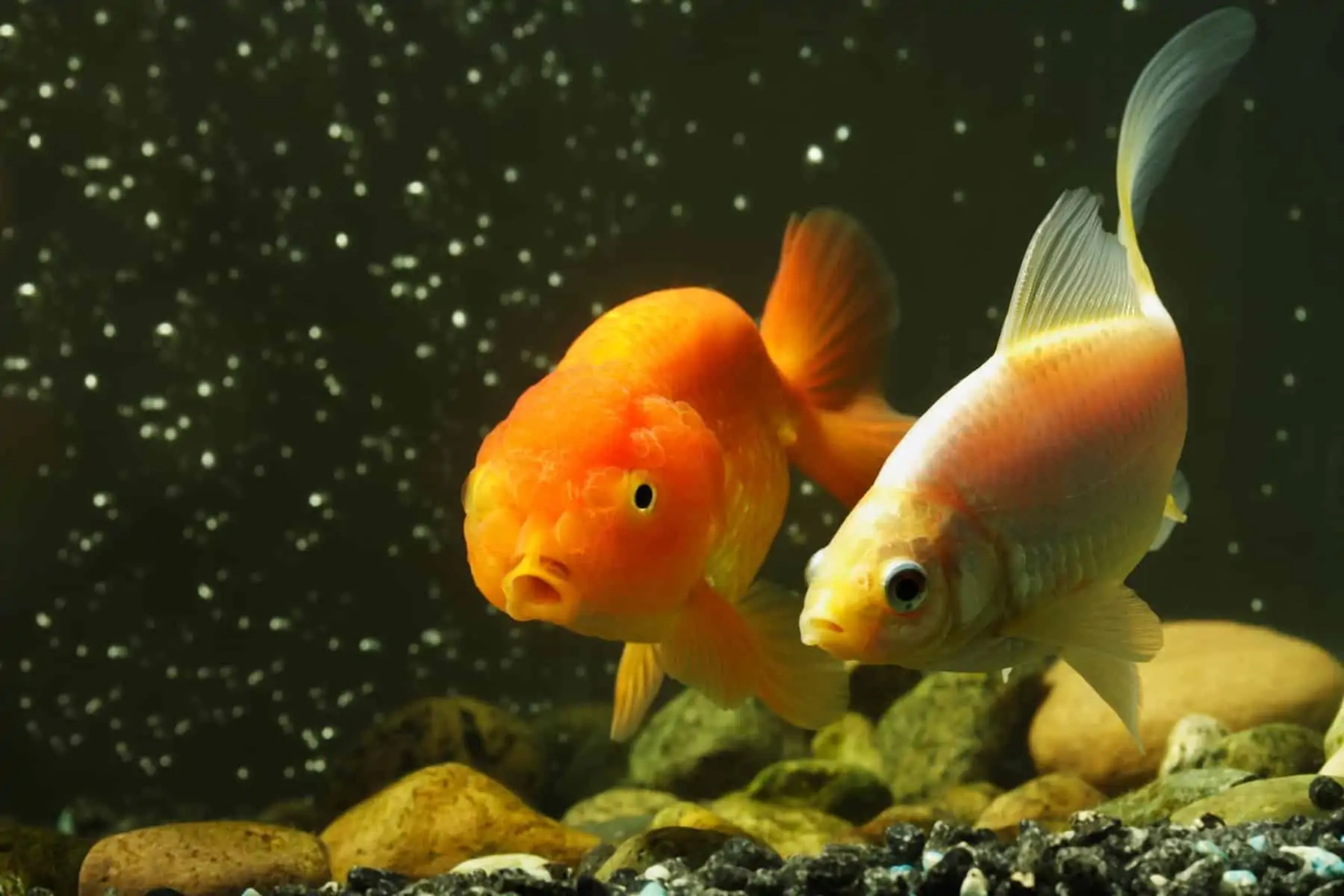
- Temperature: 65 to 72°F
- Minimum tank size: 20 gallons
- Size: up to 6 inches
- Ease of care: Intermediate
Fancy goldfish might not be everyone’s first choice of algae eaters for a cold water tank, but I can vouch for them personally!
My Fancies spent much of their day nibbling on any algae they could reach on decorations, the tank glass, and even on pieces of gravel in the substrate.
There are around 200 different types of goldfish to choose from, so you’ll never be short of options, and they are pretty easy to keep.
That said, there are a few drawbacks to keeping these coldwater fish, which is why I’ve categorized them as having intermediate care requirements.
- Fancy goldfish can grow to measure 6 inches or more, so you’ll need a large tank to accommodate them.
- These are very messy fish! Goldfish generate a tremendous amount of waste, so you’ll need to maintain their tank diligently every week to keep the environment clean and healthy for the fish.
- If you grow live aquatic plants, the goldfish will remove the algae from the leaves, along with some of the plants! Goldfish also like to dig, which can be a nuisance in fish tanks with lots of planting.
Despite their downsides, Fancy goldfish are one of my favorite aquarium fish, and you can keep them in outdoor ponds too.
Final Thoughts
Did you enjoy our guide to choosing algae eaters for your cold water tank? If you did, please take a moment to share the article!
Algae can be a real pain if your tank gets overrun with the green, slimy stuff. Luckily, there are quite a few species of fish and inverts you can choose that will keep algae under control and eat detritus and other organic waste as an added bonus.
What algae eaters have you chosen for your cleaning crew? Tell us in the comments box below!


